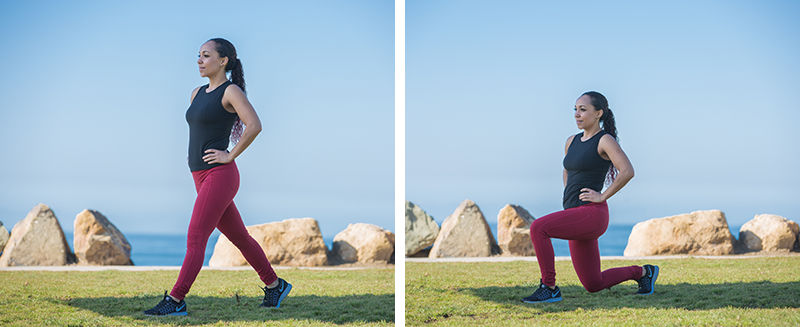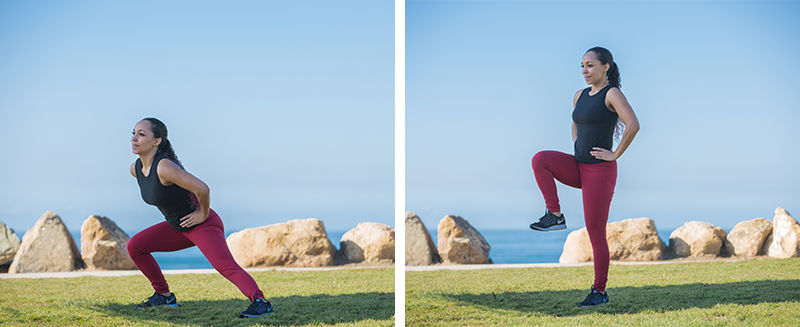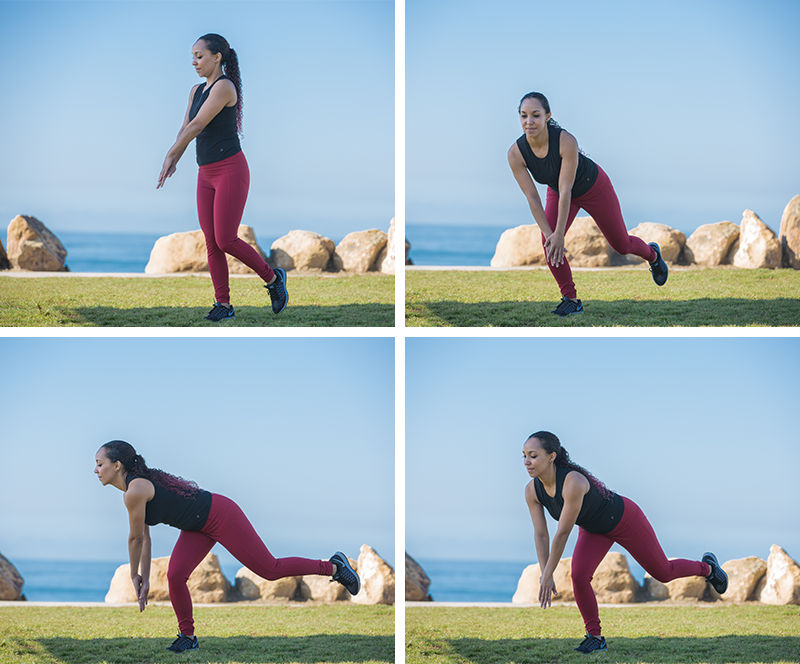Incorporating balance training into exercise programming is essential to improving stability and mobility in the kinetic chain. Proper balance and movement mechanics contribute to improved functionality and performance in both physical activity and activities of daily life. As we age, various physiological and kinetic chain functions, especially balance, begin to decline, and fear of falling or injury as a result of falling becomes prevalent. Including progressive balance training into exercise programming, however, can help improve function as well as reduce the risk of falling, as we age.
Dynamic balance is defined as the ability to move the body outside of its base of support or the act of maintaining postural control while moving, and should be a consistent part of exercise programming. It is imperative, however, that competency in static balance be demonstrated prior to adding dynamic balance movements to programming.
Try adding the following variations of dynamic balance exercises to your clients’ programs. If some of the single-leg movements prove to be too challenging, regress to a split or staggered stance until balance improves and then progress to single-leg movements. Have clients complete each exercise for 10-12 repetitions on each side for two to three sets. Progress these movements and add complexity, as dynamic balance improves, by using resistance such as dumbbells, upper-body movements, or unstable surfaces such as a BOSU.
Stationary Lunge
Start with feet hip-width apart. Step back into a lunge position, keeping the back heel off the floor. Bend both knees and lower the extended knee toward the floor while maintaining proper postural alignment. Repeat on the other side.
Reverse Lunges
Start with your feet hip-width apart. Step back into a lunge position. Bend knees and bring the back foot up to meet the front foot. Repeat on the other side.
Lateral/ Side Lunge With Knee Drive
Start with feet hip-width apart. Step out to the side while keeping the feet parallel to one another. Shift weight to the side while hinging from the hips. Return to an upright position while lifting the opposite knee and driving it up to about hip height (or a point that feels comfortable). Pause to regain balance. Return to the starting position and repeat for desired number of repetitions; repeat on the other side.
Single-leg Romanian Deadlift
Start with feet hip-width apart and balance on one foot. The knee of the supporting leg should be slightly bent. Maintain a straight back and hinge from the hips while reaching forward with the opposite arm. Return to standing position and repeat on the other side. Option: Hold a dumbbell in the hand that reaches out.
Multidirectional Reach
Start with feet hip-width apart and balance on one foot. Hinge from the hips and reach the hands outside the supporting leg, front, and inside the supporting leg (this counts as one repetition). Repeat on the other side.




 by
by 








 by
by